The role of aircraft carriers and submarines in the war in the Pacific
For a long time the leading role of aircraft carriers in stories World War II in the Pacific seemed self-evident and was not seriously disputed by anyone. However, for some time now, in the disputes that have already become traditional for "VO", "who is stronger, whale or elephant ... I mean an aircraft carrier or a submarine?", Supporters of the underwater weapons began to make a very interesting argument: statistics conclusively prove that American submarines sank much more tonnage than the deck aviation.
Indeed, having studied the loss of trading fleet In Japan, we will see that Yankee carrier-based aircraft sank 393 ships with a total tonnage of 1 tons, while American submariners chalked up 453 ships with a tonnage of 135 tons (if dissimilar forces took part in the destruction of the vessel, for example - aviation and submarines, then their joint trophy when counting was divided in half - hence fractions in the number of ships). At the same time, the American submarines inflicted severe damage to the Japanese navy, they destroyed 1154,5 high-speed battleship (the battlefield cruiser), the Congo, four large aircraft carriers and five escort ships, seven hydro-air carriers, three heavy and ten light cruisers, thirty-six destroyers, fourteen destroyers ... and that's not counting the numerous air transport, auxiliary cruisers, frigates, submarines, and all in all - about 4 warships. So maybe the laurels of the winner of the Japanese fleet and the main naval force of that war should be given to a submarine? Let's try to figure it out.
For a start, look at the pre-war plans of the parties. The US doesn’t interest us much, because they still didn’t come true, but the Japanese ... In essence, the plan for the Yamato sons was as follows - to occupy many distant territories from the southern seas with a series of attacks in the southern seas and create a defensive fortified line along the Kuril line and Marshall Islands, Timor, Java, Sumatra, Malaya, Burma. All this was necessary to the Japanese in order to provide the metropolis with a sufficient amount of scarce raw materials and, in the first place, oil, without which it was simply impossible to fight. The occupation of such a territory inevitably led Japan to war with England, Holland and the United States. Japan was not afraid of the first two - the British got bogged down in the European war with Germany, their fleet was torn between the defense of the metropolis, the defense of the Atlantic communications and the Mediterranean, while Holland did not have any significant naval forces. But the US ... America - that was serious.
The Japanese had some idea of the American military plans (“Orange”, “Rainbow-5”), according to which in the event of war the American fleet had to move forward, taking successively the Marshall, Caroline and Mariana Islands. After this, the squadron of the United States was to inflict a final defeat on the imperial fleet in the waters immediately adjacent to the Japanese metropolis. The only question was how fast will the US move.
The Japanese believed that they were unable to win the protracted war with the United States, so if the Americans chose a slow and cautious movement forward, their industrial power would certainly ensure victory - and it was this understanding that determined the military plan of Japan. In essence, the Japanese imperial fleet had a choice between two strategies. The first is to gather all the forces into a fist, to wait for the American fleet in the waters of the metropolis, and there, hoping for individual superiority in the quality of the ships and the best training of the crews, to defeat the US Navy in the general battle. The second is to deliver a preemptive, preemptive strike of such power as to immediately smash the US Pacific Fleet, and if not break, then weaken enough to prevent its intervention at the stage of the formation of the “defensive perimeter”.
Why did the Japanese choose a preventive strike strategy? The answer is very simple. Japan had to seize territories far from each other and do it as quickly as possible — in order to master the resources there and not give the opposing forces time to prepare for repelling an invasion. To do this, the capture should be made in the form of a series of operations carried out at the same time. But the Japanese fleet did not have the slightest opportunity to cover operations in Malaya, Java, and the Philippines simultaneously. The appearance of American squadrons in any region where the main forces of the Japanese fleet were not concentrated automatically led to the defeat of the imperial forces operating there, which the Japanese could not afford. Therefore, Japan could not give up the initiative to the enemy and wait for the Americans to come forward, especially since time worked for the United States. The entire Japanese plan of war was based on the rapid mastery of resources, for this it was necessary to quickly capture many remote territories, and for this it was necessary to destroy the US Pacific Fleet. This became the key task of the Japanese fleet at the initial stage of the war.
That's how the Japanese decided on a preemptive strike. Apply it should have aircraft carriers ... and, surprisingly, submarines.
Taking into account what we know today, the participation of submarines in such an operation looks at least strange. But this is today, and then the Japanese admirals expected very much from submarines. Word of S. Fukutome, Chief of Staff of the United Fleet of the Japanese Imperial Navy:
So, even greater hopes were pinned on submarines than on deck aircraft, but they were completely wrong. Moreover, the Japanese submarine fleet almost blew off the whole operation. The fact is that the Japanese submarines deployed around Hawaii were repeatedly seen from American ships and more than that - an hour before the air attack began, the American destroyer Ward fought submarines attempting to get to Pearl Harbor. If the American commander would have taken the report of the destroyer commander more seriously, then the US Navy, aviation and anti-aircraft guns of Oahu could meet planes with red circles on their wings in full combat readiness ... who knows how it would turn?
However, exactly what happened happened - the Japanese carrier-based aircraft dealt a terrible blow, the American surface fleet suffered terrible losses and ceased to be a force capable of suppressing Japanese plans to seize southern territories. As for the submarine fleet, the Yankees never considered him capable of solving problems of this magnitude, and his number was not at all amazing. Total US submarine fleet consisted of 111 submarines, of which 73 were on the Pacific Ocean. But the 21 PL (of which only 11 was combat-ready) were based at Pearl Harbor — too far to make a significant contribution to the struggle for the southern seas, and the 22 PL was also located on the Pacific coast of the United States. And only 29 PL located on Cavite (Father Luzon, Philippines). Nevertheless, it was logical to assume that the existing forces could at least complicate Japanese naval operations.
Alas, nothing like this happened. American submarines did not take part in the battles for Guam and Wake, probably because these islands were located too far from the submarine base sites and were captured too quickly (although T.Rosko writes about patrolling the submarines from Wake). But when it came to the Philippines, the submariners of the United States could not oppose anything to the Japanese landing forces.
The admirals of the United Fleet divided the operation into two stages - first, three detachments of ships landed troops to capture key airfields in order to carry out the main landing under the cover of their aircraft. Forces landing at the Aparry included the old light cruiser, 6 destroyers, 3 minesweeper, 9 anti-submarine ships and 6 transports. The 1 light cruiser, 6 destroyers, 9 minesweepers, 9 anti-submarine ships and 6 transports went to Wigan. And finally, the third connection that attacked Legaspi consisted of 1 light cruiser, 6 destroyers, 2 hydraulic base, 2 minesweeper, 2 patrol vessel and 7 transports. All three assault forces were crowned with complete success, and the Japanese proceeded to the main thing - the landing in Lingen Bay. Seventy-three vehicles, grouped in three groups, transported the 48 Infantry Division. Not all of the Japanese did it right: by the dawn of 22 December, on the day of disembarkation, the Japanese warships and transports lost formation and were scattered on 20 miles (37 km).
What did the American submarines do? One destroyer and two small vehicles were sunk. In fairness it is worth noting the attack "Sivulf" on the Japanese hydro-avian carrier "Sanya Maru" - of the four torpedoes fired by the Americans, one still hit the target. If this torpedo had exploded, then the list of Japanese casualties would probably have been more than one aquifer carrier. But the torpedo did not explode.
What conclusions can be drawn from all of the above? The Japanese conducted four amphibious operations with a relatively small force in the immediate vicinity of the American submarine base and the American submarines 29 could not oppose anything to this. The same thing happened with the defense of Java. To protect the Dutch East Indies, the Allies concentrated significant forces, although the sources do not converge in their numbers. For example, S. Dall writes about 46 submarines - Dutch 16, American 28 and British 2. T. Rosko points out that “the submarine forces consisted of twenty-eight American, three British and nine Dutch submarines.” Be that as it may, the total number of submarines reached or even exceeded four dozen ships. From January to the beginning of March, the Japanese 1942 r successively seized Bangka Rhodes (on Celebes), Kemou, Menado, Kendari, Ambon Island, Makassar, Bali Lombok, Dutch and Portuguese Timor, Borneo ... and finally Java itself. Allied submarines could not stop, detain, or even seriously scratch the invading forces of the Japanese. S.Dall points out the following losses of amphibious caravans and their escort from American submarines - one destroyer sunk (“Natsusio”), another - torpedoed, but not sank (“Suzukaze”), and another transport (“Tsuruga Maru”) killed Dutch submariners. T.Rosko is more loyal to the American submarines, he reports the sinking of “Meeken Maru”, “Akito Maru”, “Harbin Maru”, “Tamagawa Maru” and the former gunboat “Kanko Maru”, as well as damage to several warships ( which is extremely doubtful). But even so, the achieved result is still completely unsatisfactory!
In total, American submariners in January-February 1942 sank 12 of merchant ships with tonnage in 44 326 tons, but the fact is that part of these ships was destroyed in completely different places. The Americans sent their submarines to the Japanese communications and even to the shores of Japan (in the indicated period 3 PL operated there). But in no way can one assume that all submarines did not have an order to repel the Japanese invasion, but instead were sent to distant areas. The commander of the ABDA fleet, Admiral Hart, considered the use of submarines for antiamphibious defense to be a priority and tried to place their patrol routes on "dangerous-danger" directions. Despite this, the Japanese quickly and methodically seized one island after another.
In a short time, the United Fleet delivered a series of strongest blows and captured many territories. Many made way for them: base aviation in the Philippines, British battleships from Singapore, ABDA command cruisers from Java, submarines — they all tried, but no one succeeded. And only in one case, the Japanese could not succeed. "Operation MO", during which the Japanese planned to take Port Moresby, was planned no worse than the previous ones, but this time the Americans opposed their aircraft carrier forces to the United Fleet.
The first naval battle in history, in which the opponents did not exchange a single shot - the battle in the Coral Sea, the Americans lost "on points", exchanging their heavy aircraft carrier "Lexington" for a light Japanese "Seho". Yes, and the second US aircraft carrier, Yorktown, one might say, miraculously escaped death. However, the losses of the Japanese aircraft were heavy, and one of their heavy aircraft carriers received such damage that did not allow him to take further part in the operation - and the Japanese turned back. The capture of Port Moresby did not take place.
The following two operations of the Japanese fleet — Midway and the seizure of the islands of Attu and Kyska — are also very indicative of the capabilities of submarines and aircraft carriers to counter enemy landing operations. American submarines were used both there and there, aircraft carriers - only at Midway. In this battle, the four aircraft carriers Nagumo crushed the Americans' air force, based on land airfields, but was defeated and destroyed by deck bomber bombers of the United States. Of course, the "land" aircraft played a huge role, "pulling out" Japanese fighter jets, so that by the time of the attack of carrier-based aviation, they simply did not have time to stop them, and indeed in that battle, US aircraft carriers were very lucky. But you can't throw the words out of the song - it was the aircraft carriers who crushed the color of the Japanese 1 th air fleet - the 1 th and 2 th aircraft carrier division, which was a turning point in the war in the Pacific.
And what about the submarines? Twenty-five submarines were ordered to wait for the Japanese squadron at Midway, but in fact only nineteen could be deployed, of which twelve were located at the approach of the Japanese aircraft carriers. However, in that battle, the American submarines did not sink a single enemy ship. True, we should mention the partial success of the submarine "Nautilus" - she managed to attack the Japanese aircraft carrier "Kaga", and if it were not for defective torpedoes, then it is quite possible that this attack resulted in the death of the Japanese ship. But, first, the attack took place two hours after the Kaga was hit by the American dive bombers' bombs, and if this had not happened, the aircraft carrier would have been completely different from where it had actually been at the time of the Nautilus attack and the ships just did not meet. Secondly, even if the Kaga and Nautilus courses crossed, it’s far from a fact that the submarine of the Americans would be able to go on the attack - being in a submerged position it is almost impossible to get close to the fighting ship moving at least by the 20 hub (except that he accidentally put himself under attack, passing close to the submarine). Thirdly, hitting an already damaged and mortally wounded ship is not an example easier than an intact one (the same speed), so one cannot say that the torpedo attack of the Nautilus on the intact Kaga was just as effective (shortly before the attack on Kaga "" Nautilus "tried to attack the Japanese battleship. Unsuccessfully.) And finally, even if everything worked out well and" Kaga "was sunk, the death of one of the four aircraft carriers could not save Midway from the invasion.
But it cannot be said that the participation of the US submarine in the defense of Midway turned out to be completely meaningless. Four Japanese heavy cruisers, sent to Midway for its bombardment, suddenly discovered an American submarine and was forced to sharply turn off, causing the trailing Mogami to ram Mikumu. Both heavily damaged cruisers were slowly dragged home, but a day later, the Mikumu sank the Enterprise and the Hornet.
Japanese submariners also did not shine in this battle - the veil of 13 submarines, which were supposed to find (and with luck - and attack), the US aircraft carriers, going from Pearl Harbor to Midway, turned too late - by that time, the American aircraft carriers were already stationed at Midway. Naturally, the Japanese submarines did not find anyone that inspired some Japanese commanders confidence in an easy victory ... The only success of the Japanese submariners - the sinking of "Yorktown" - can be attributed to the outcome of the battle for Midway only with very large reservations. In fact, the Japanese lost this battle on 4 June, when all four Japanese aircraft carriers received deadly damage from US carrier-based aviation. In response, Japanese carrier-based aircraft severely damaged Yorktown, but it could still be dragged to the shipyards. The Americans did so in towing the damaged ship, but on June 6, after the battle of Midway ended, the Yorktown fell under the torpedoes of a Japanese submarine. This could not affect the outcome of the battle in any way, and indeed the Yorktown was in danger only because it was badly damaged by the Japanese batchers, but the fact remains - it was thanks to the submarine that America missed the heavy aircraft carrier at the very moment when its fleet extremely in need of ships of this class. Remember this.
And one more interesting fact. Both submarines attacking enemy aircraft carriers (the Nautilus and the Japanese I-168) were launched to the target by the aircraft — reconnaissance aircraft detected the enemy’s position and then the coordinates / courses / speeds of the enemy formations were reported to the submarine commanders.
So, the American aircraft carriers won the battle, and the US submarines again did not achieve anything. But the Americans were aware of the Japanese desire, at the same time as Midway’s attack to capture several Aleutian islands. The Yankees could not send aircraft carriers there - they were all needed by Midway, therefore the Aleut defense was entrusted to the submarines. There (in Dutch Harbor) were deployed 10 old submarines of type "S". As a result, the Japanese inflicted several strikes of carrier-based aviation on Dutch Harbor and captured the islands of Attu and Kysk without any interference — not to prevent, but even to detect an enemy for ten US submarines turned out to be an impossible task.
In the battles for Guadalcanal, both the Americans and the Japanese faced the same tasks — to ensure that their own transports carrying reinforcements and supplies to the island were wired, not to allow the enemy to do the same and, if possible, to break the enemy fleet. US aircraft carriers played a role here, repelling the attack of the United Fleet, covering a large convoy (the second battle near the Solomon Islands) and repeatedly (albeit unsuccessfully) fought with the Japanese in the battle of the Santa Cruz Islands. However, their efforts did not interrupt Japanese communications — the Americans retained the ability to deploy reinforcements in the afternoon, and the Japanese organized night flights of high-speed ships that carrier aircraft could not prevent. Finally, the Japanese fleet was stopped in the third battle near the Solomon Islands, when the battleships, cruisers and destroyers of the United States defeated the Japanese squadron, and land and deck aircraft (using the Henderson airfield as a jump airfield) successfully finished the Japanese ships damaged during night battles and attack forces. On the whole, American aircraft carriers played a very important role, if not a key one - they, together with Henderson Field, provided air supremacy during daylight hours, under which the Japanese fleet, even if perfectly trained in night sea battles, was not I could win. At the same time, if the American aircraft carriers had been destroyed, and the Japanese had retained a sufficient number of aircraft carriers and trained pilots, the fate of Guadalcanal would have been decided, and, by no means in favor of the United States. By providing air cover to their transports, the Japanese could quickly transfer sufficient reinforcements to the island. American submarines ... have traditionally achieved nothing. Even such a singer of the American underwater power, as T.Rosko states:
The Japanese submariners succeeded more - they destroyed one of the three heavy aircraft carriers remaining with the Americans - the “Wasp”. In essence, it was the actions of the Japanese submarines that provided a period of unprecedented weakness of the American carrier-based aircraft — when the Japanese pilots turned into a flaming Hornet ruin, later finished by Japanese destroyers, the US Pacific Fleet remained with only one operating aircraft carrier! If the Japanese submarines had not sunk the "Yorktown" at Midway and "Uosp", then in the battle of Santa Cruz the Americans already had four heavy aircraft carriers instead of two and it is very likely that the Japanese fleet at Santa Cruz would have suffered a serious defeat ... In other words, the actions of the Japanese submariners caused serious losses and weakened the American fleet quite a bit, but this did not bring the Japanese victory - despite the obvious success, the Japanese submarines could not be a decisive factor in the battle of Guadalcanal (the Japanese still lost this battle) have demonstrated their usefulness.
We can say the same about the American submarines at the Battle of the Mariana Islands. After all, what happened there? The Americans decided to land on Saipan, a strategically important island, the seizure of which not only cut the Japanese defense in two, cut off the air bridge to Rabaul, gave the American submariners an excellent base, but also allowed the newest B-29 strategic bombers to attack Japan. The Japanese understood perfectly the significance of the Mariana Islands in general and Saipan in particular, and were ready to enter the decisive battle for the possession of these islands. Therefore, 500-600 basic aviation aircraft were deployed on the islands themselves and at any time they were ready to support approximately 450 deck-based aircraft of the Ozawa Mobile Fleet.
Of course, no submarines in such conditions could provide for the landing of amphibious convoys and the landing of marines on Saipan. Another thing - aircraft carriers. American carrier-based aviation delivered powerful blows at Saipan, Tinian and Guam airfields, turning them into ruins and destroying about a third of Japanese base aviation. Then, two American carrier groups went north, attacking the airfields of the Iwo Jima and Titijima islands, leveling them with the ground and destroying up to a hundred aircraft at the airfields and ordering 40 fighters in the air. After that, the base aviation of the Mariana Islands was not just defeated, but it also lost hope of getting reinforcements ... except for the deck aircraft of the Mobile Fleet. But the Japanese could not come so quickly, so the landing of the Americans on Saipan was supported by the strikes of hundreds of aircraft carrier planes, which to a certain extent predetermined its success.
The battle between the fleets was near, and the submarines of the Americans showed their best. It was they who discovered the exit of Ozawa’s ships to the Mariana Islands and thereby warned the American commander that a battle with the Japanese fleet was inevitable. It was the submarines who discovered the exact location of the Japanese fleet, which had deployed its orders to attack (Spruence’s aircraft could have done this much later) and were the first to attack the enemy aircraft carriers, drowning the Sekaku and Taiho.
But not this decided the outcome of the battle. 19 June, the Japanese launched 4 shock waves, a total of 308 airplanes - and the vast majority of them were destroyed. Of the 69 aircraft of the first wave survived 27, of the second 110 machines - 31, but the surviving aircraft that attempted to land on Guam were subsequently destroyed by American aircraft. American submarines sank "Taiho" through 10 minutes after raising the second wave, and the Sekaku died even after raising the fourth, so that their death had little impact on the power of Ozawa's strikes - it is unlikely that these ships carried more 40-50 planes to the bottom . At the same time, even after the death of Sekaku, Ozawa had not yet considered the battle lost, although he had only the 102 plane left (according to other data, 150). He was preparing to resume the battle the next day, but on June 20 the Americans found the Japanese earlier - and delivered their first (and last) blow to the Japanese ships. The 80 raised in the air of the Japanese aircraft could not do anything and after the American strike (during which the aircraft carrier “Hye” was sunk), only 47 aircraft remained at Ozawa’s disposal.
The battle of the Mariana Islands was lost by the Japanese for two reasons - they could not resist the landing of the US on Saipan, and in the general battle of the fleets the Japanese carrier-based aviation was finally destroyed. Both that and another - achievements of deck aircraft of the USA. As a result, the Japanese fleet formally had impressive forces in the battle of Leyte Gulf consisting of five heavy and four light aircraft carriers (not counting escort ones), but only one heavy and three light aircraft went into battle - because all the numerous Japanese aircraft carriers had only a hundred -As trained pilots. What could the presence of "Taiho" and "Sekaku" decide if the American submarines would not have sent them to the bottom of the Mariana Islands? Nothing.
In the war in the Pacific, submarines showed their complete inability to achieve dominance at sea, and also to independently solve offensive or defensive tasks — in no case did their attempts to independently use against the enemy warships led to the success of the operation as a whole. However, submarines proved to be an important component of a balanced fleet - their competent use in conjunction with aircraft carriers and other surface ships made it possible for the enemy to cause sensitive (though not decisive) losses. In addition, submarines proved to be an absolutely indispensable means of fighting on enemy communications — their greatest successes were achieved in the fight against enemy cargo transportation, while using submarines on communications forced the enemy either to spend significant resources to protect their own merchant ships, separating them from combat operations, or put up with the hardest, irreplaceable losses in tonnage (in fact, the Japanese had to do both). And it must be admitted that not a single type of armed forces has coped with the destruction of enemy trade tonnage as well as the submarines did.
At the same time, aircraft carriers have become the main means of gaining dominance at sea and ensuring both amphibious and antiamphibious operations. It was the aircraft carriers that played the main role in the defeat of the imperial fleet of Japan and in the crash of the defensive perimeter created by it. However, aircraft carriers were not at all universal ships capable of solving absolutely all the tasks of war at sea. Torpedo-artillery surface ships (night battles at Guadalcanal, and Leite too) and submarines (fighting for communications) also demonstrated their usefulness and ability to do inaccessible for deck aviation.
In general, it can be stated that winning a war is not achieved by a separate class of ships, but by a balanced fleet, which, in essence, was demonstrated by the Americans, who fused battleships, aircraft carriers, cruisers, destroyers and submarines into an invincible combat vehicle. However, if you still look for the “first among equals”, then “His Majesty the aircraft carrier” should be titled “The Destroyer of Japan’s naval power”.
1. S. Dall The battle path of the Imperial Japanese fleet
2. T. Roscoe Combat operations of US submarines in World War II
3. F. Sherman War in the Pacific. Aircraft carriers in battle.
4. M. Hashimoto Sunk
5. Ch. Lockwood Stomp them all!
6. W. Winslow Forgotten Fleet
7. L. Kashcheev American submarines from the beginning of the twentieth century to the Second World War
8. V. Dashyan Ships of the Second World War. Japanese Navy
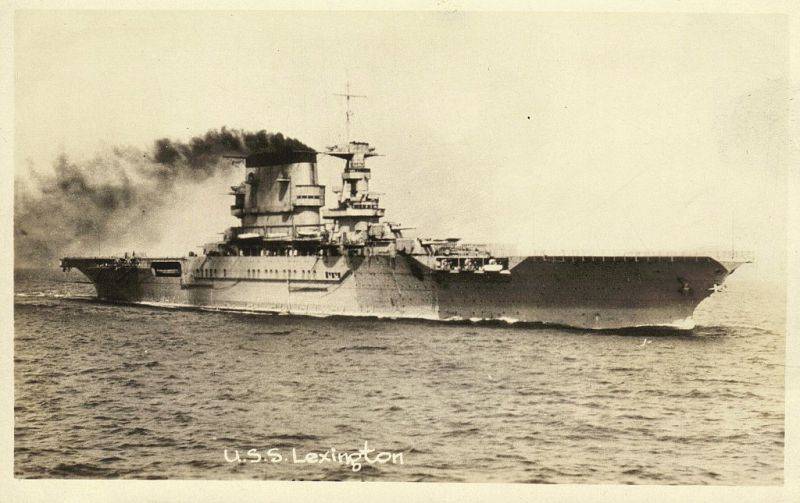
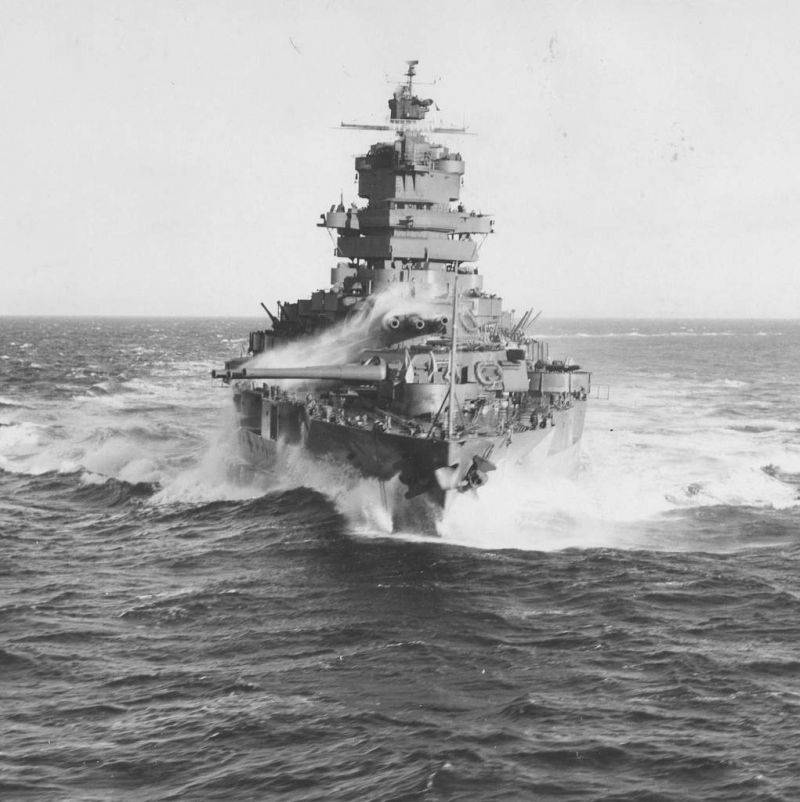
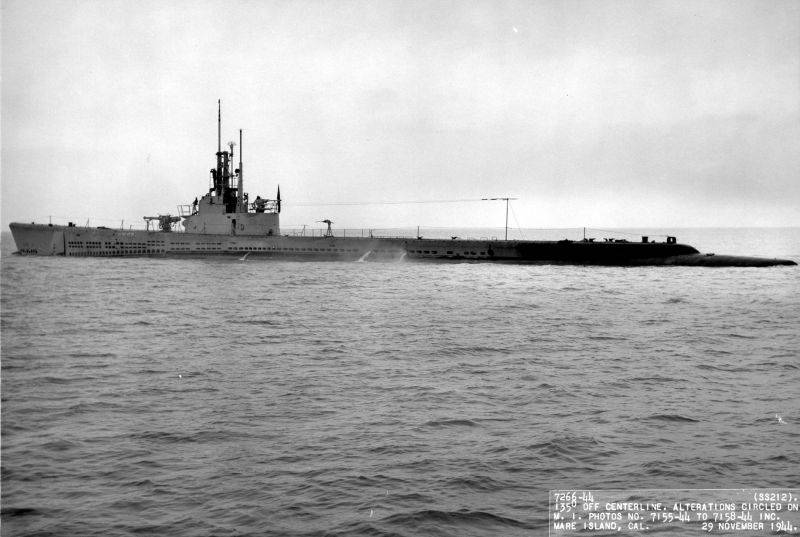
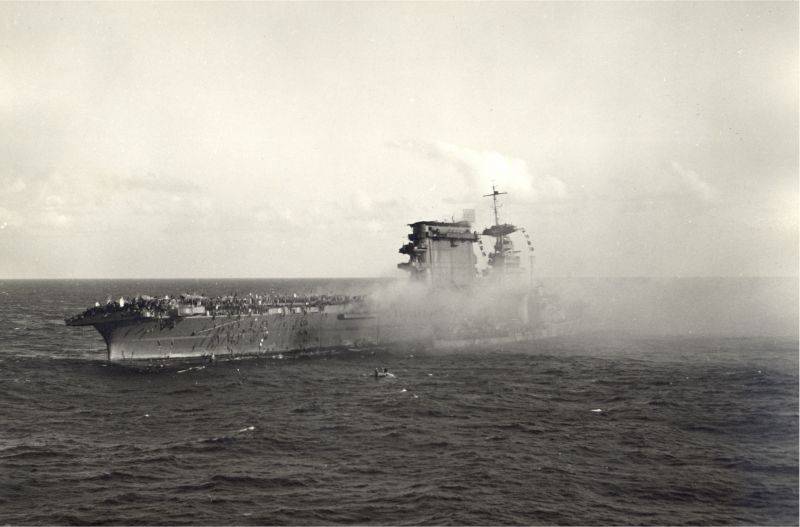
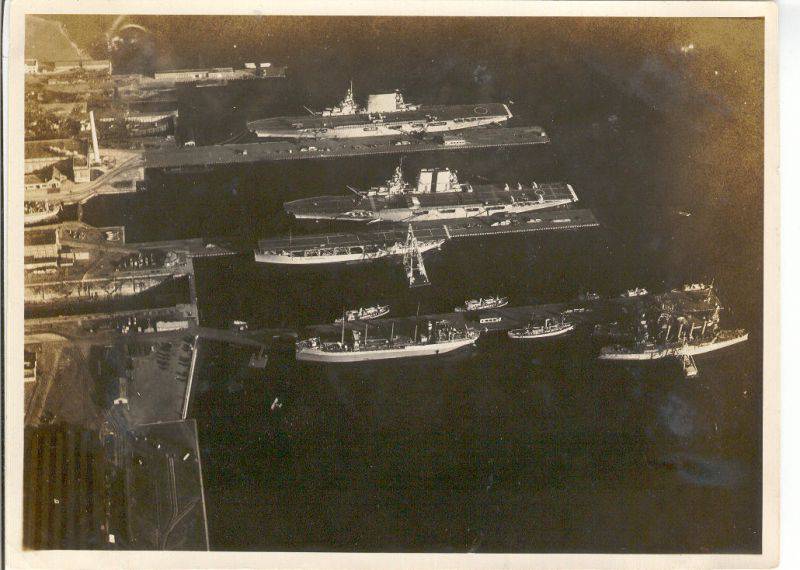
Information